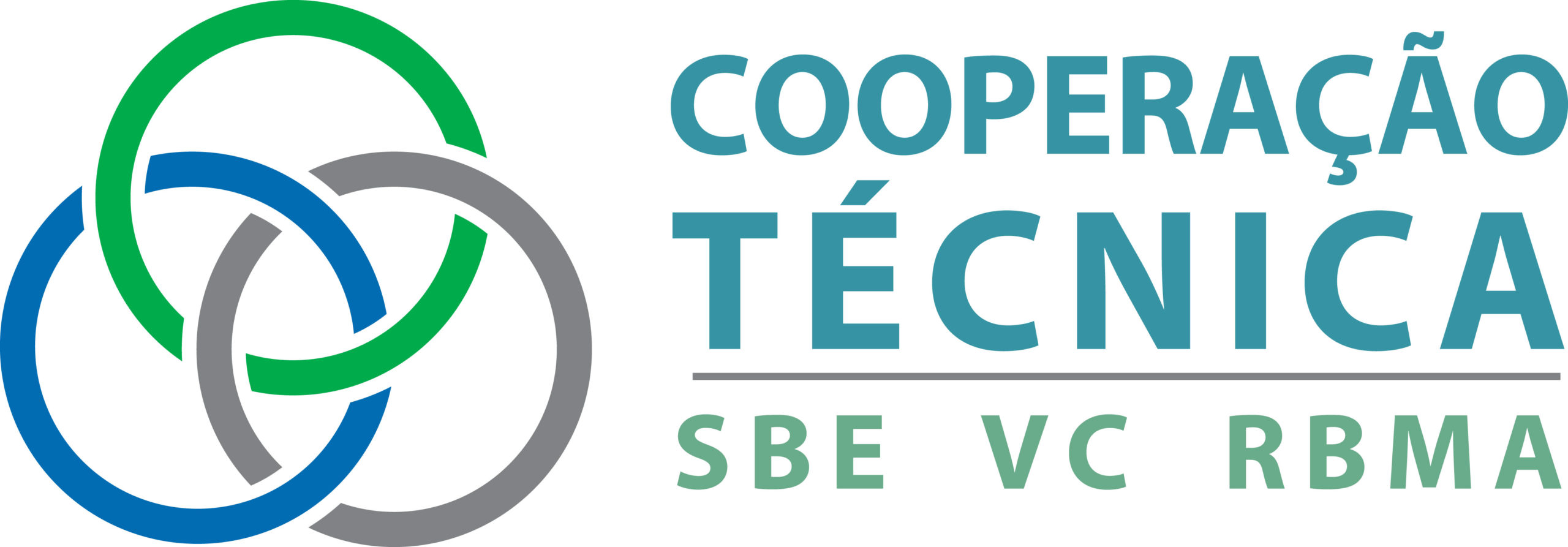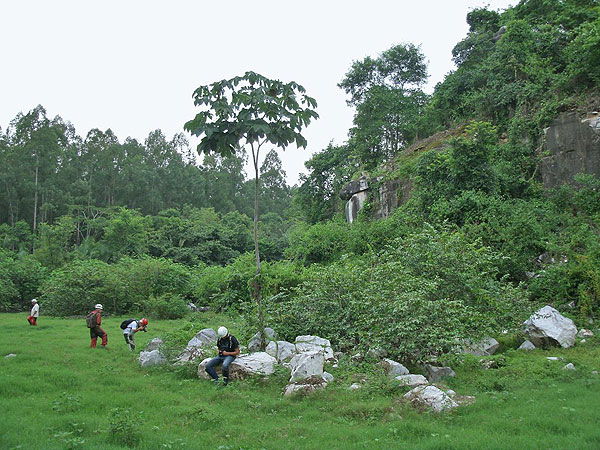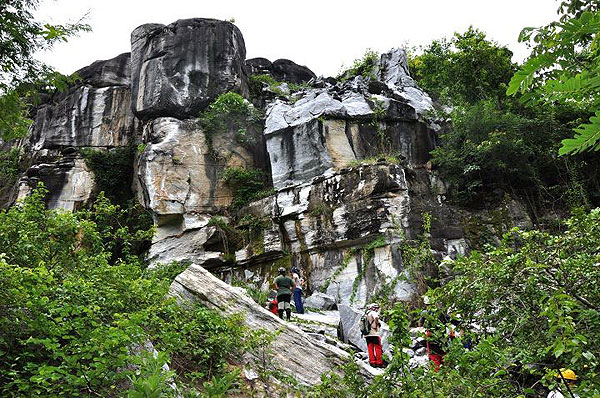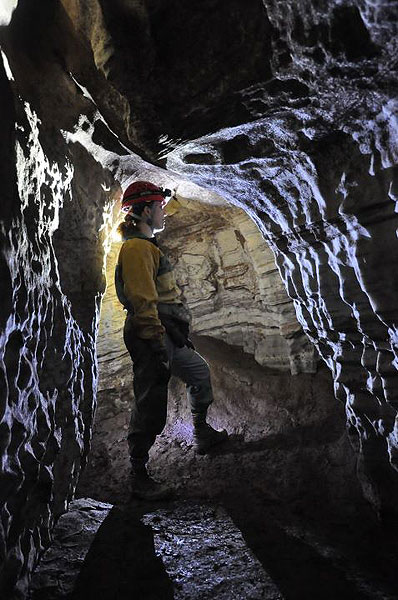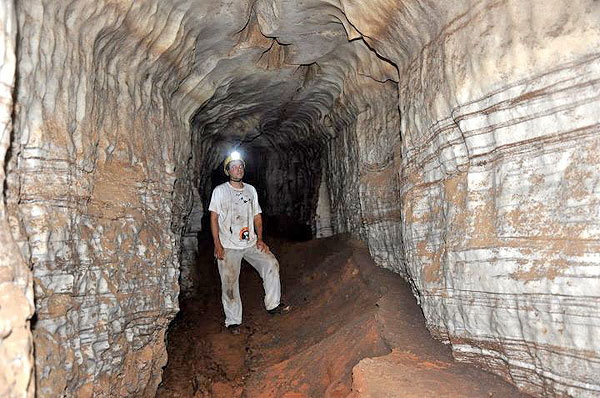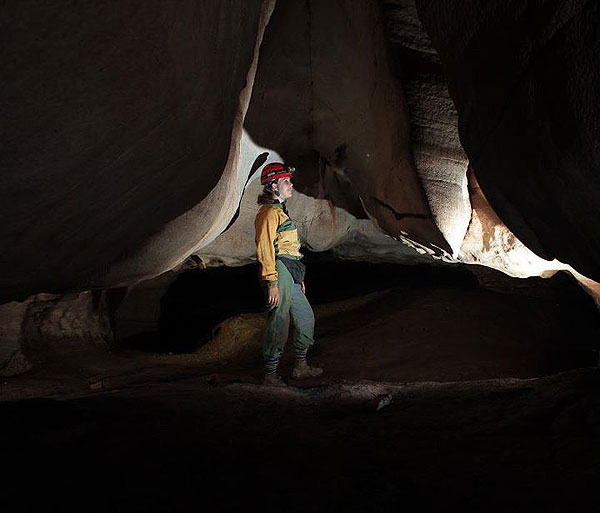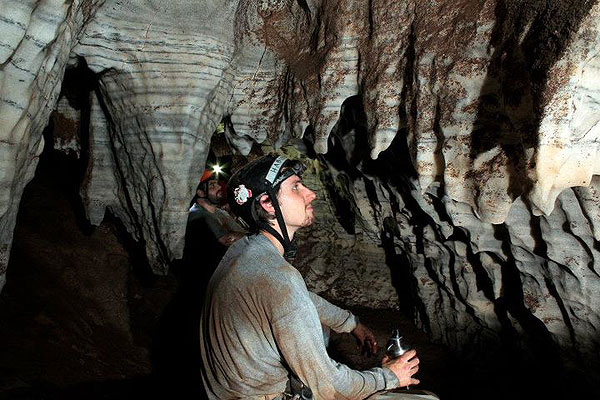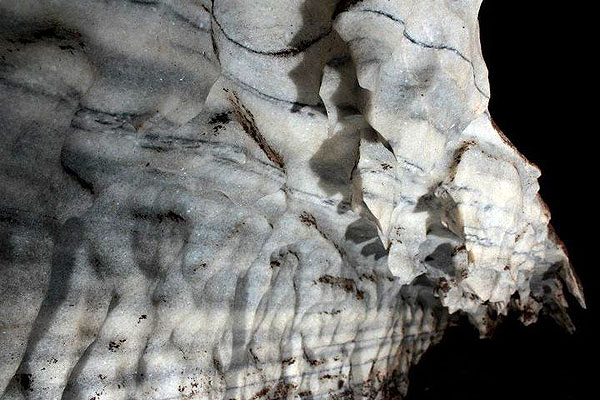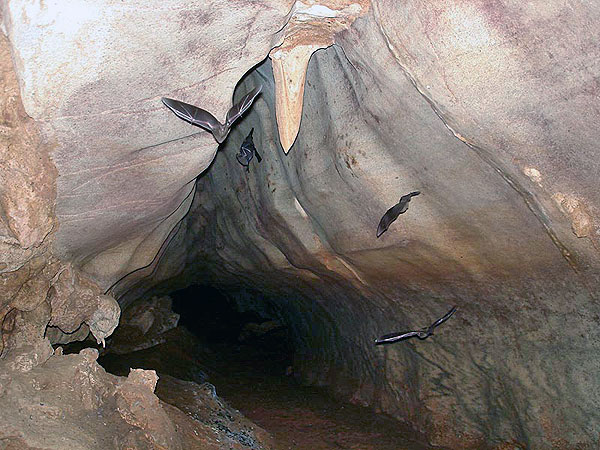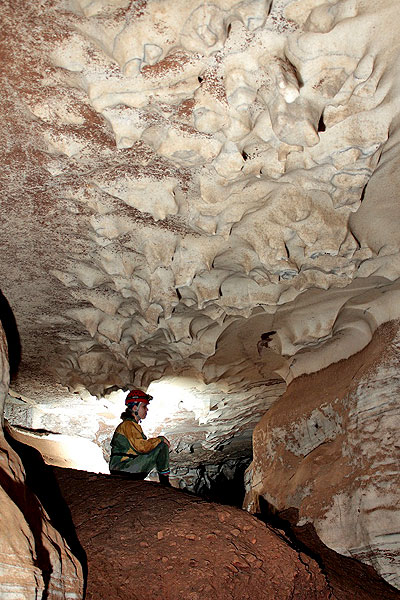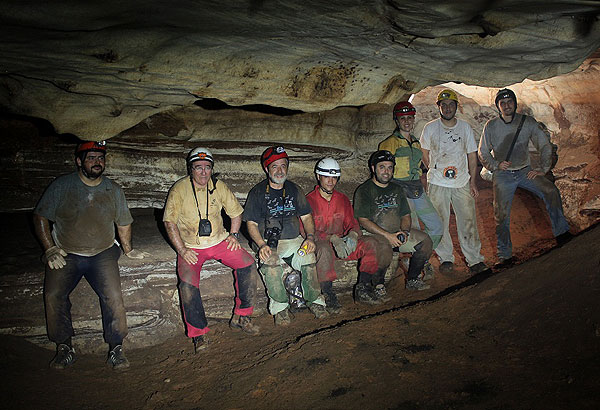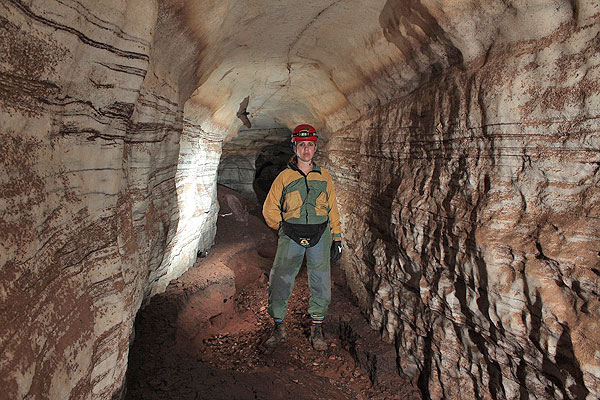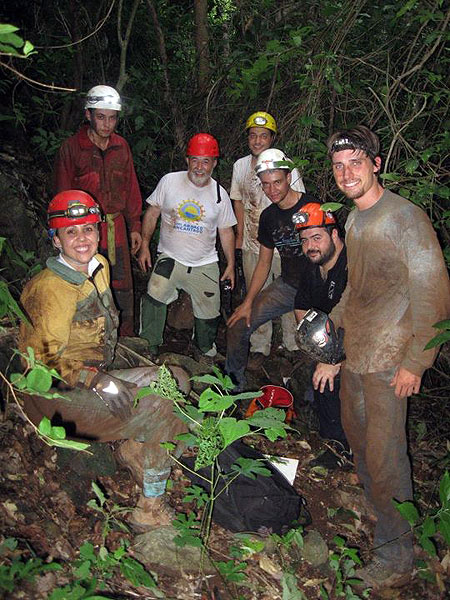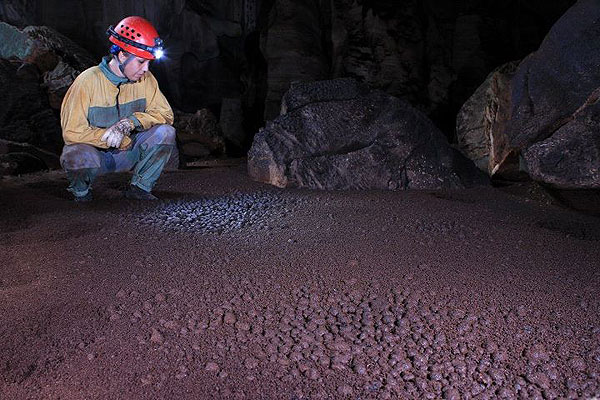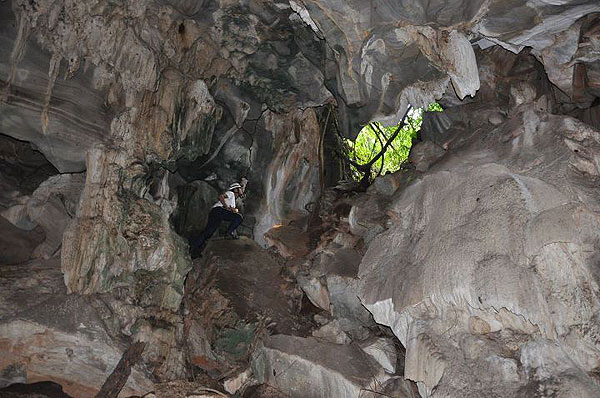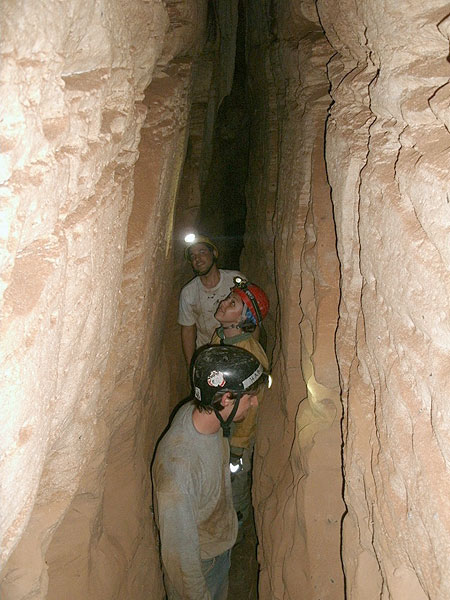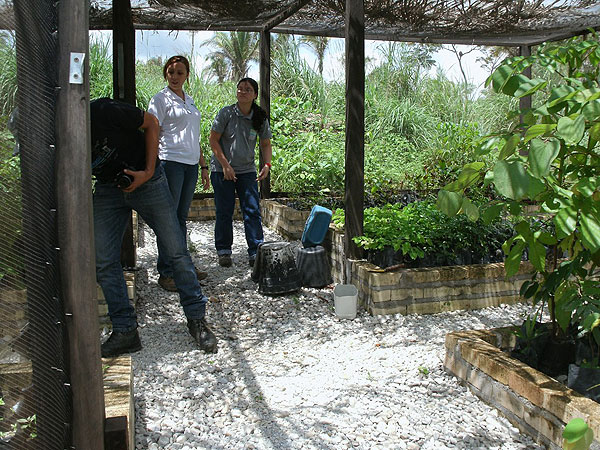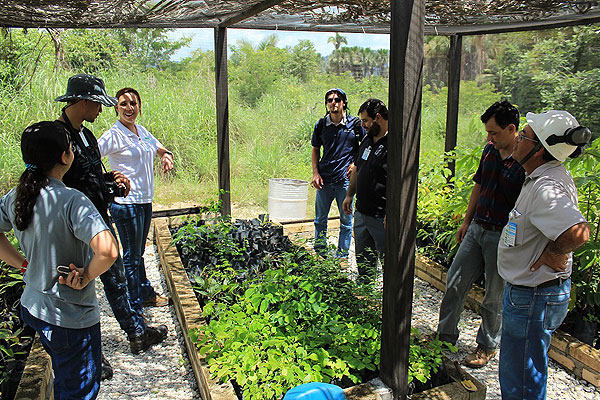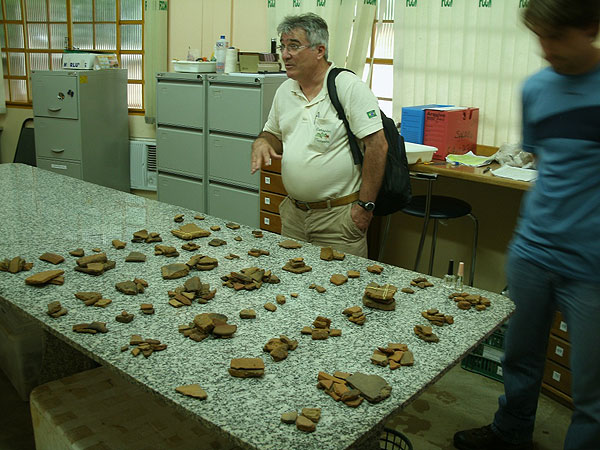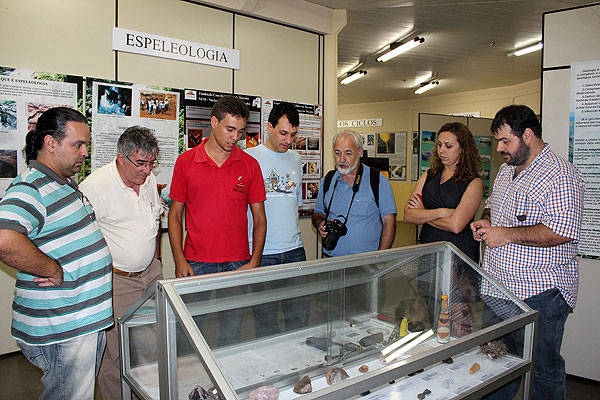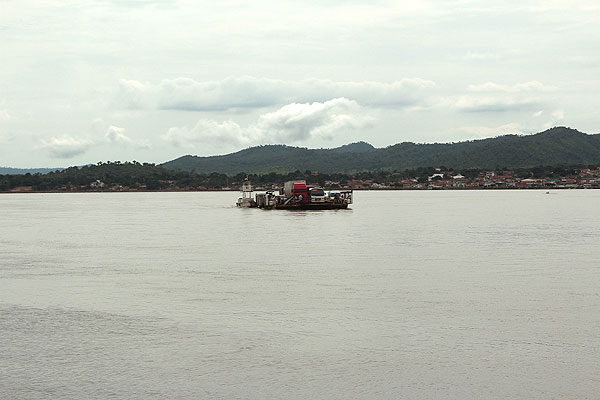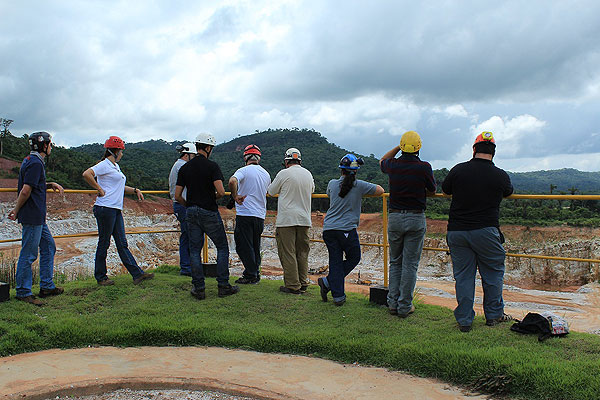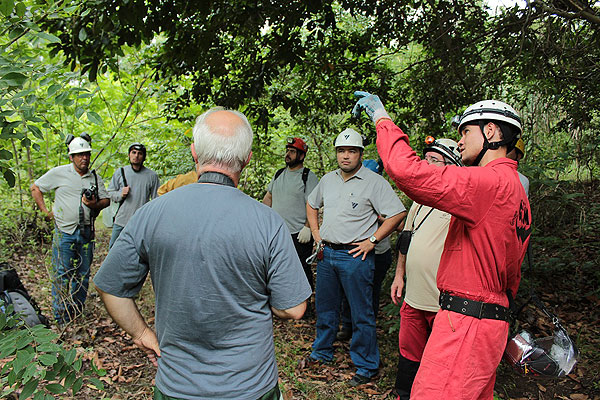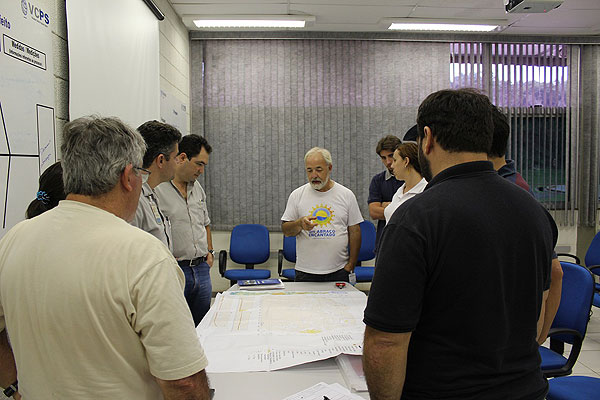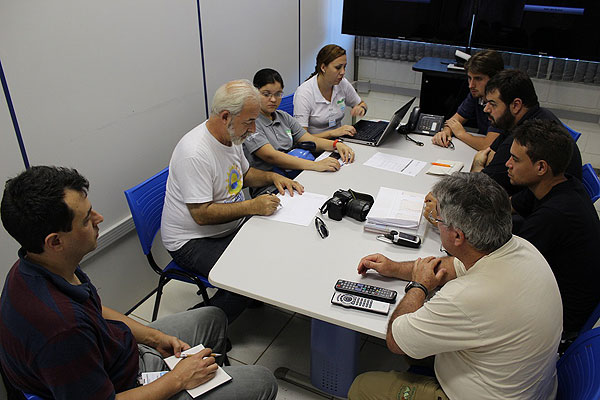The members of the Executive Committee under the Agreement of Technical Cooperation between VC, the SBE and the RBMA, in conjunction with the Speleological Group of Marabá (GEM), visited the municipality of Xambioá, in Tocantins, during the period from January 10 to 14, 2012. The main opjectives of the activity were the diagnosis of the state of the cave and the divulgation of the Agreement of Technical Cooperation to the unit of Votorantim Cimentos of the city.
Xambioá is located in the north of Tocantins, some 130 km from Marabá and 515 km from Palmas, in the region known as the “Bico do Papagaio” (Parrot´s Beak). The city is known for the extraction of quartz crystals and for having been the site of the Guerrilha do Araguaia (Insurgents of Araguaia), and a conflict between the Brazilian army and the insurgents of the armed rural movement linked to the Communist Party of Brazil, which took place between 1972 and 1974.
Speleological research in the region began in 1992, coordinated by the GEM group In conjunction with the foundation “Casa da Cultura of Marabá” and focused on studies for the preservation of the environment and the local culture. The foundation is responsible for the “Museum of Marabá”, which is one of the most respected institutions in the north and northeast of Brazil in relation to environmental and historical research, rescue, and preservation.
There are 17 known cavities in the region of the “Chapada”, with the “Caverna da Explosão” being the largest, with 1,203 meters of horizontal projection and 14m of horizontal displacement. It is located some 14 km from the urban nucleus of Xambioá, in a property recently acquired from Cosipar by Votorantim Cimentos .
The entrance of the cave was partially destroyed in 2010 before the property was purchased by VC, and many large blocks of the limestone massif housing the cave fell. According to a report of the GEM, the collapse was of natural origin, although the region was utilized by Cosipar for the mining of limestone; this activity was stopped in 2008 after complaints were made to CECAV about the destruction of caves.
The technical difficulties involved in the stabilization of the limestone massif collapsed blocks led to the isolation of the area and policy of avoiding travel in the area, especially in the area of the collapsed blocks.
The narrow entrances and the initial passages of the cave make access difficult, which limits its use for tourist visitation, although it is perfectly adequate for a speleological training camp
Despite the impact of the collapsed blocks on the main entrance, the interior of the cave is preserved and has quite a rich fauna, with a large number of bats and other cave inhabitants, similar to those of other smaller caves in the same massif, which increases its importance for preservation.
During the visit to this unit of Votorantim Cimentos, the participants became acquainted with the installations and environmental actions being undertaken by the company, especially the work of capturing animals for release in other locations, the planting of seedlings, and the development of planning designed to integrate company operations with the preservation of the rivers, forests, and caves of the region.
At that time, the agreement for technical cooperation was presented to the managers of the unit, and the objectives of the visit were presented, especially the role of that cooperation, so that the actions taken under the auspices of the agreement would become symbols for motivation and institutional relations.
The technical cooperation VC-SBE-RBMA would like to thank Votorantim Cimentos for its logistic support and the speleological group of Marabá and the Foundation “Casa de Cultura de Marabá” for the local support.

